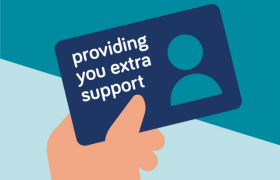
Self-help strategies
There are a number of measures that can help relieve chronic pain and back-muscle spasm caused by spinal breaks.
To cope with pain and spasm
When your back is hurting or you’re having a muscle spasm:
- Alter your posture or rest for a while using a lumbar support (such as a rolled-up towel) in your lower back. Resist the temptation to curl up and instead gently arch your upper body backwards.
- Apply warmth to the painful area for up to 20 minutes. Use a covered hot water bottle or a microwave heated wheat bag or have a warm bath or shower. You can also buy special heat patches and gel packs from chemists and supermarkets. Heat therapy helps to block some of the pain signals going to the brain and relaxes tight and painful muscles. It can also improve the blood supply to the muscles, which may help sore muscles and tissues to heal.
- Alternatively try applying ice or a cold pack. Use a bag of frozen peas wrapped in a tea towel or reusable ice gel packs from the supermarket or chemist. You can even try ice cold water in a hot water bottle. Another method is to place a damp, folded towel in a plastic bag in the freezer for 10-20 minutes. Remove the plastic bag and apply the towel to the painful area. Only apply ice or cold packs for up to 15 minutes at a time to avoid skin damage. You can reapply them every few hours.
- Try a relaxation technique or watch your favourite TV programme. This helps to slow down your breathing, reduce muscle tightness and relax tense neck and shoulder muscles.
- Try ‘pacing’ your daily activities. This means ‘doing a bit, resting a bit and then doing a bit more’. This allows muscles to have rest periods before they become over tired and can help reduce the frequency of spasms.
To avoid pain and spasm
Ways to avoid pain and muscle spasm include:
- When planning to lift anything heavy or bulky, allow someone to help you. If you have no option but to lift it yourself, do so by bending your knees and not by bending your back forwards, and hold the object close to your body and not at arm’s length.
- Avoid over-stretching when reaching to a high shelf and when pushing or pulling a vacuum cleaner. When hanging out the washing, put the washing basket on a chair to avoid repeatedly bending down. Divide your groceries into lighter bags and carry them in two hands, and don’t twist your spine while holding a heavy bag.
- When sitting, use a rolled-up towel or cushion to support your lower back, and keep your knees below the level of your hips.
- If you notice that certain activities make you more prone to muscle spasm, try doing some gentle warm-up exercises beforehand. These can help by strengthening over-stretched muscles, improving the blood supply to the area and gradually increasing the length and stretchiness of shortened muscles.
Useful downloads:
Get support from a Specialist Nurse
Contact our free Helpline for tailored information about osteoporosis and bone health:
 Search
Search
 Login
Login


